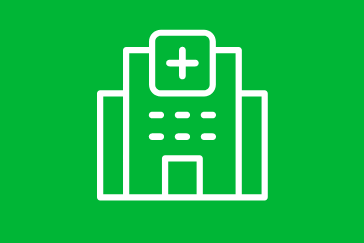
Crisis Intervention in Mental Health
According to the Agency for Healthcare Research and Quality, 43.6 million adults have some type of mental health disorder and 12.5% of the emergency department visits are related to mental illness. Healthcare professionals addressing individuals in crisis are faced with high-risk behaviors that are escalating, unpredictable moods, and deep despair. These situations can result in an extremely stressful and high-risk situation for both the individual and the healthcare professional. To care for these individuals appropriately, the healthcare professional must have a good understanding of crisis intervention and management.
This course defines a crisis and explains how to recognize when someone is experiencing a crisis, discusses how a crisis develops, precipitating factors, and how to determine the seriousness of the crisis, prevalence of mental illness and crises, and reviews interventions for crisis management.
Crisis Intervention in Mental Health
According to the Agency for Healthcare Research and Quality, 43.6 million adults have some type of mental health disorder and 12.5% of the emergency department visits are related to mental illness. Healthcare professionals addressing individuals in crisis are faced with high-risk behaviors that are escalating, unpredictable moods, and deep despair. These situations can result in an extremely stressful and high-risk situation for both the individual and the healthcare professional. To care for these individuals appropriately, the healthcare professional must have a good understanding of crisis intervention and management.
This course defines a crisis and explains how to recognize when someone is experiencing a crisis, discusses how a crisis develops, precipitating factors, and how to determine the seriousness of the crisis, prevalence of mental illness and crises, and reviews interventions for crisis management.

Medical Cannabis for Pain Control: The Health Effects of THC and CBD
Chronic pain is a global problem. The usual treatments for pain relief are nonsteroidal anti-inflammatory drugs (NSAIDs) and prescription opioid medications. Many people complain that these medications offer inadequate pain relief and are can have adverse effects. As states legalize medical marijuana, it is becoming a popular alternative to prescription and over-the-counter pain medications.
This course discusses the difference and similarities of TCH and CBD, the health effects of each, and the recommended guidelines for medicinal cannabis use.
Medical Cannabis for Pain Control: The Health Effects of THC and CBD
Chronic pain is a global problem. The usual treatments for pain relief are nonsteroidal anti-inflammatory drugs (NSAIDs) and prescription opioid medications. Many people complain that these medications offer inadequate pain relief and are can have adverse effects. As states legalize medical marijuana, it is becoming a popular alternative to prescription and over-the-counter pain medications.
This course discusses the difference and similarities of TCH and CBD, the health effects of each, and the recommended guidelines for medicinal cannabis use.

Reducing the Use of Restraints and Assessment Tools in Post Acute Care Settings
The use of restraints is considered an intrusive and dangerous intervention used today. The risk of using restraints far outweigh the benefits of using restraints. Therefore, the use of restraints should be a last resort when managing patients who need protecting or have the potential to hurt themselves as well as others. The Joint Commission and the Centers for Medicare and Medicate Services are also known as CMS have standards and regulations regarding restraint use and have created programs to assist organizations and healthcare personnel in implementing a restraint-free environment. This course is designed to provide you, as healthcare workers in the post-acute care setting, the knowledge to reduce the use of restraints.
Reducing the Use of Restraints and Assessment Tools in Post Acute Care Settings
The use of restraints is considered an intrusive and dangerous intervention used today. The risk of using restraints far outweigh the benefits of using restraints. Therefore, the use of restraints should be a last resort when managing patients who need protecting or have the potential to hurt themselves as well as others. The Joint Commission and the Centers for Medicare and Medicate Services are also known as CMS have standards and regulations regarding restraint use and have created programs to assist organizations and healthcare personnel in implementing a restraint-free environment. This course is designed to provide you, as healthcare workers in the post-acute care setting, the knowledge to reduce the use of restraints.

Mental Health and Suicide Prevention. Identification of Risk Factors and Intervention
Course Overview
This course provides an overview and strategies to assess and manage suicide risk in patients. Participants will learn about the risk factors and warning signs associated with suicide, enabling them to identify patients at risk. The course emphasizes the importance of early intervention and effective communication in addressing suicide concerns. Practical assessment strategies will be discussed, empowering clinicians to conduct thorough evaluations.
Goal
This course is designed to enhance healthcare professionals’ ability to assess and manage suicide risk through the identification of risk factors and warning signs and the implementation of effective assessment and response strategies, ultimately prioritizing patient safety and well-being. Course expiration date: 5/24/2024
Mental Health and Suicide Prevention. Identification of Risk Factors and Intervention
Course Overview
This course provides an overview and strategies to assess and manage suicide risk in patients. Participants will learn about the risk factors and warning signs associated with suicide, enabling them to identify patients at risk. The course emphasizes the importance of early intervention and effective communication in addressing suicide concerns. Practical assessment strategies will be discussed, empowering clinicians to conduct thorough evaluations.
Goal
This course is designed to enhance healthcare professionals’ ability to assess and manage suicide risk through the identification of risk factors and warning signs and the implementation of effective assessment and response strategies, ultimately prioritizing patient safety and well-being. Course expiration date: 5/24/2024

Combat Methamphetamine Epidemic Act (CMEA) Training
The CMEA training is a training required to sell drug products containing ephedrine, pseudoephedrine, and phenylpropanolamine. You are being asked to complete this training because of the federal law, the Combat Methamphetamines epidemic of 2005 states that you cannot sell chemical products containing ephedrine, pseudoephedrine, or phenylpropanolamine until you have completed this course. This training will help you understand the laws and what you must know before selling these drug products.
Combat Methamphetamine Epidemic Act (CMEA) Training
The CMEA training is a training required to sell drug products containing ephedrine, pseudoephedrine, and phenylpropanolamine. You are being asked to complete this training because of the federal law, the Combat Methamphetamines epidemic of 2005 states that you cannot sell chemical products containing ephedrine, pseudoephedrine, or phenylpropanolamine until you have completed this course. This training will help you understand the laws and what you must know before selling these drug products.

Mental Health Medication Introduction and Overview
Course Overview
This course will walk the learner through the types of medications used to treat mental health disorders, side effects, and review a select few of the warnings issued by the FDA about medications. Disorders covered in this course include schizophrenia, depression, bipolar disorder, anxiety, and ADHD.
Note: this course does not provide information about diagnosing mental disorders and should not be considered a comprehensive source for all medications available.
Goal
The goal of this course is to help learners to identify common medications used for specific mental disorders and associated risks, and emphasize the importance of effective communication with healthcare professionals regarding medication treatment. Course expiration date: 9/23/2025
Mental Health Medication Introduction and Overview
Course Overview
This course will walk the learner through the types of medications used to treat mental health disorders, side effects, and review a select few of the warnings issued by the FDA about medications. Disorders covered in this course include schizophrenia, depression, bipolar disorder, anxiety, and ADHD.
Note: this course does not provide information about diagnosing mental disorders and should not be considered a comprehensive source for all medications available.
Goal
The goal of this course is to help learners to identify common medications used for specific mental disorders and associated risks, and emphasize the importance of effective communication with healthcare professionals regarding medication treatment. Course expiration date: 9/23/2025

Opioid Death Epidemic Crisis: A Review of Pain Management Alternatives
Due to the ever-increasing reports of accidental deaths in the US associated with prescription pain relievers, the reduction of opioids has been elevated to a national healthcare priority. Ongoing, pain that is not relived can suppress the immune system. This may result in postsurgical infection and diminished wound healing.1 Ineffective management of acute pain can lead to uncontrolled acute pain and transition into chronic pain. Todays clinician requires an understanding of alternative non-opioid pain management practices that can be utilized to influence and reduce opioid prescribing in the practice setting.
Opioid Death Epidemic Crisis: A Review of Pain Management Alternatives
Due to the ever-increasing reports of accidental deaths in the US associated with prescription pain relievers, the reduction of opioids has been elevated to a national healthcare priority. Ongoing, pain that is not relived can suppress the immune system. This may result in postsurgical infection and diminished wound healing.1 Ineffective management of acute pain can lead to uncontrolled acute pain and transition into chronic pain. Todays clinician requires an understanding of alternative non-opioid pain management practices that can be utilized to influence and reduce opioid prescribing in the practice setting.

The Clinically Complex Patient, Course Code: CO2236739
This course will discuss the typology of patient complexity, the prevalence and influencing factors of clinically complex patients, and review evidence-based guidelines in determining patient complexity and caring for the complex patient. Learners will be oriented to the typology of patient complexity, common cluster comorbidities, factors leading to an increase in patient complexity and evidence-based guidelines for the identification and care of the complex patient. The course also provides insights into the population health impact of complex patients.
This course is approved by Washington State Department of Social and Health Services (DSHS) to provide continuing education credit for long term care workers in Washington State.
The Clinically Complex Patient, Course Code: CO2236739
This course will discuss the typology of patient complexity, the prevalence and influencing factors of clinically complex patients, and review evidence-based guidelines in determining patient complexity and caring for the complex patient. Learners will be oriented to the typology of patient complexity, common cluster comorbidities, factors leading to an increase in patient complexity and evidence-based guidelines for the identification and care of the complex patient. The course also provides insights into the population health impact of complex patients.
This course is approved by Washington State Department of Social and Health Services (DSHS) to provide continuing education credit for long term care workers in Washington State.

Osteoporosis Management
Osteoporosis is a common disease for older adults. Because patient lifestyle choices may contribute to osteoporosis, awareness of these choices is essential to understanding how to assist in its prevention. This course reviews the etiology and prevalence of osteoporosis in adults, covering symptoms of osteoporosis, preventative measures for osteoporosis, and evidence-based recommendations for assessing and managing patients with osteoporosis.
Osteoporosis Management
Osteoporosis is a common disease for older adults. Because patient lifestyle choices may contribute to osteoporosis, awareness of these choices is essential to understanding how to assist in its prevention. This course reviews the etiology and prevalence of osteoporosis in adults, covering symptoms of osteoporosis, preventative measures for osteoporosis, and evidence-based recommendations for assessing and managing patients with osteoporosis.